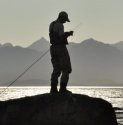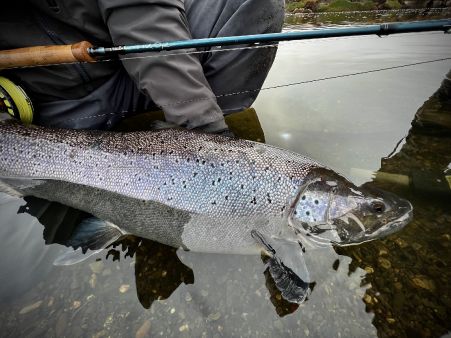Fd: How did Art and Fly Fishing get together in your life? How were your beginnings in these two different fields?
JP: I was four or five when I started fishing with my older sister in the pond down the street from my childhood home in CT. We caught pumpkinseed sunfish and the occasional crappie or largemouth bass. My uncle took me fishing when I was maybe 7 or 8, sometimes with my dad, for bluefish with chunks of bunker. He mostly fished in the lower Housatonic River, usually launching the boat under the I-95 bridge. I didn’t connect with fishing at that time with my uncle, maybe because the tackle was too big for me, too unwieldy or maybe because my uncle and father were always yelling and swearing at each other. But I remember seeing some big big bluefish. I didn’t fall helplessly into my fishing obsession until I was 9 years old, when a friend of mine at school took me fishing for bass in local ponds and introduced me to trout fishing. It was around the time when my mom left home and fishing became this thing that made me feel liberated and in control when everything seemed to be falling apart.

When I caught my first wild brook trout in a stream flowing into the Easton Reservoir (off limits to trespassers) that is the moment that I was hooked, but I definitely started drawing and painting before fishing. Both drawing and fishing help to sharpen your ability to see things in nature, help make you a more acute observer of the world around you. In order to be an efficient fisherman you have to factor in a lot of different things, the way the currents are moving, the direction of the wind, visual cues from the ecosystem that might alert you to feeding fish and what they are feeding on… birds and insects. Fishing is a very holistic nature activity. Even though your goal is to catch a fish, you have to be engaged in the system the fish is living in. Similarly, by having to draw something you also become more keenly aware of its characteristics, you become a better observer, you see things that other people don’t see. I actually think there is a predatory connection between drawing and fishing… That drawing became useful evolutionarily to help us hone our skills of observation, and the things we drew (on cave walls) were often the things we pursued for food.

Fd: Is there a particular message or feeling you want to convey through your works?
JP: When I paint a fish, in particular the large fish in the Ocean Fishes series, I try to capture something that is absolutely ineffable. It’s that moment that fishermen are familiar with, when the fish first leaves its element and enters ours… This is the moment most relevant to us in our legacy as predators, when the fish is first glinting in the sun, out of the water. Its living colors are still shifting and changing and sparkling… So in this project I painted individual fish that I had a personal experience with, that I traveled to see. I am part of those paintings, my experience of being with the fish, and will even paint my reflection in the fish, and therefore I consider them to be kind of self portraits. They are a synthesis of many measurements, photographs, sketches, but most of all the memory of being there.
Part of the point of making the Ocean Fishes paintings, life-sized fish based on individuals that I had a personal experience with, was to show the beauty of individual specimens too.
Fd: Where can we find more about your artwork?
JP: You can visit my website: www.troutsite.com and find all of my work there. Thanks!




















